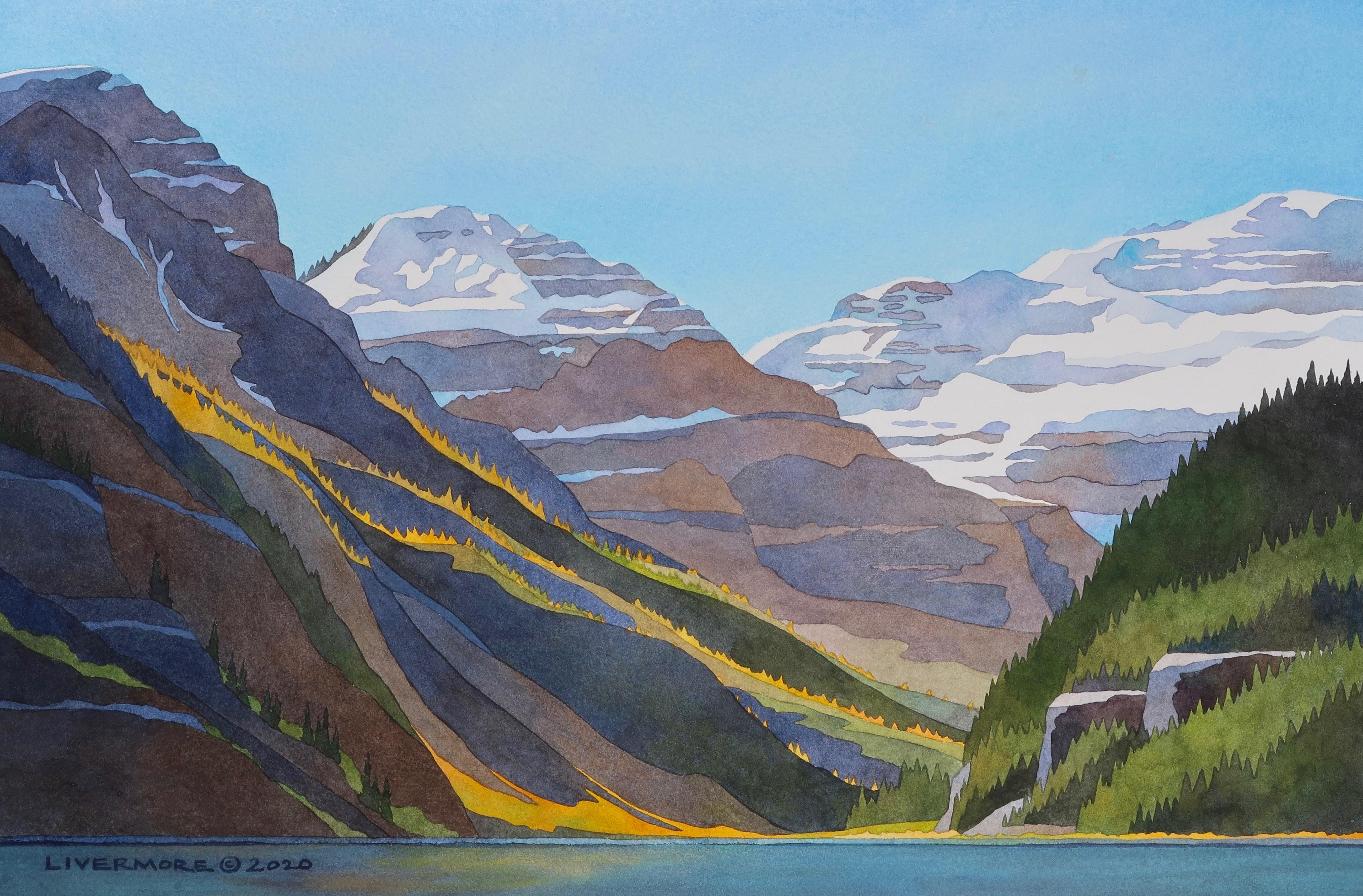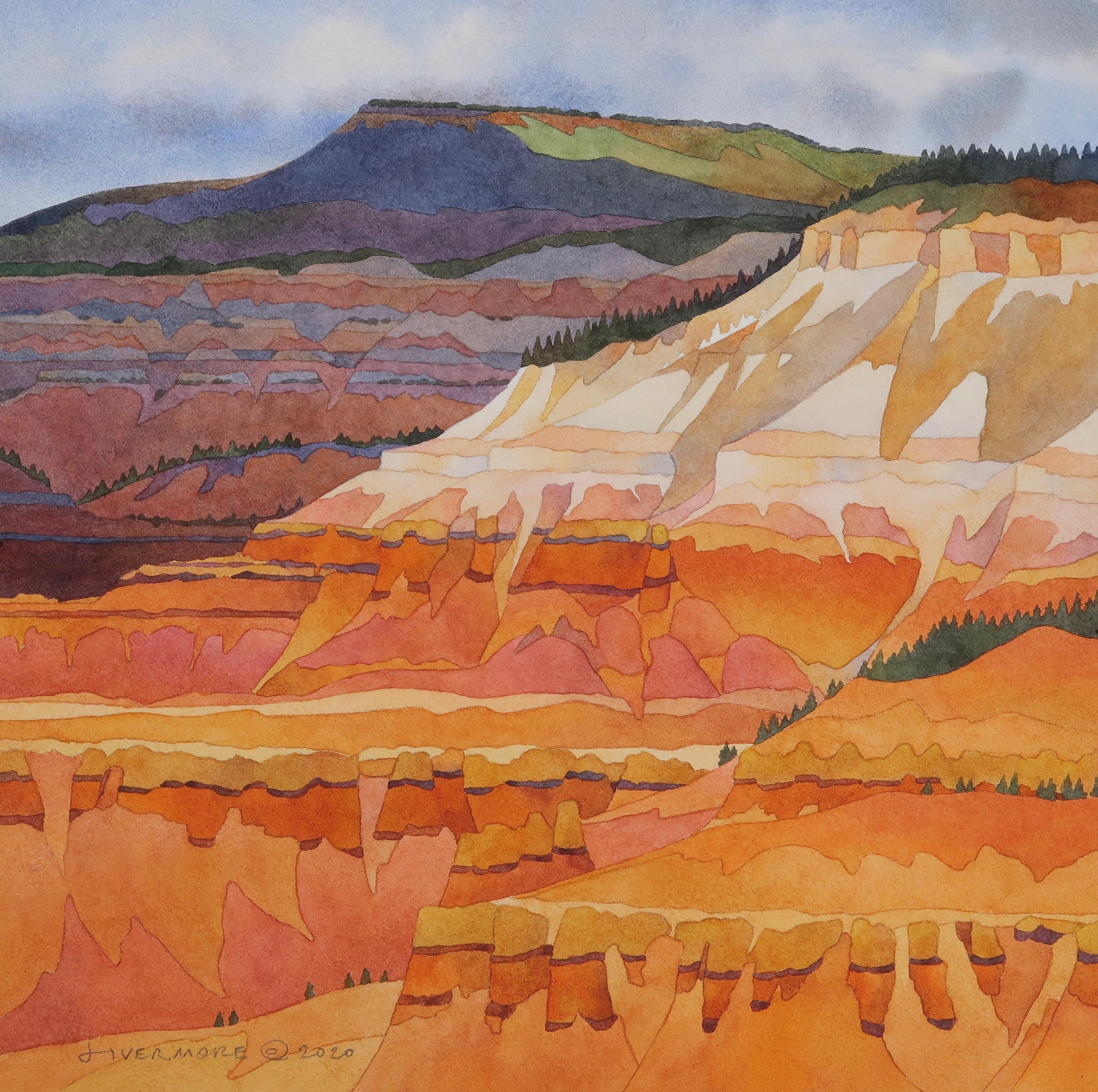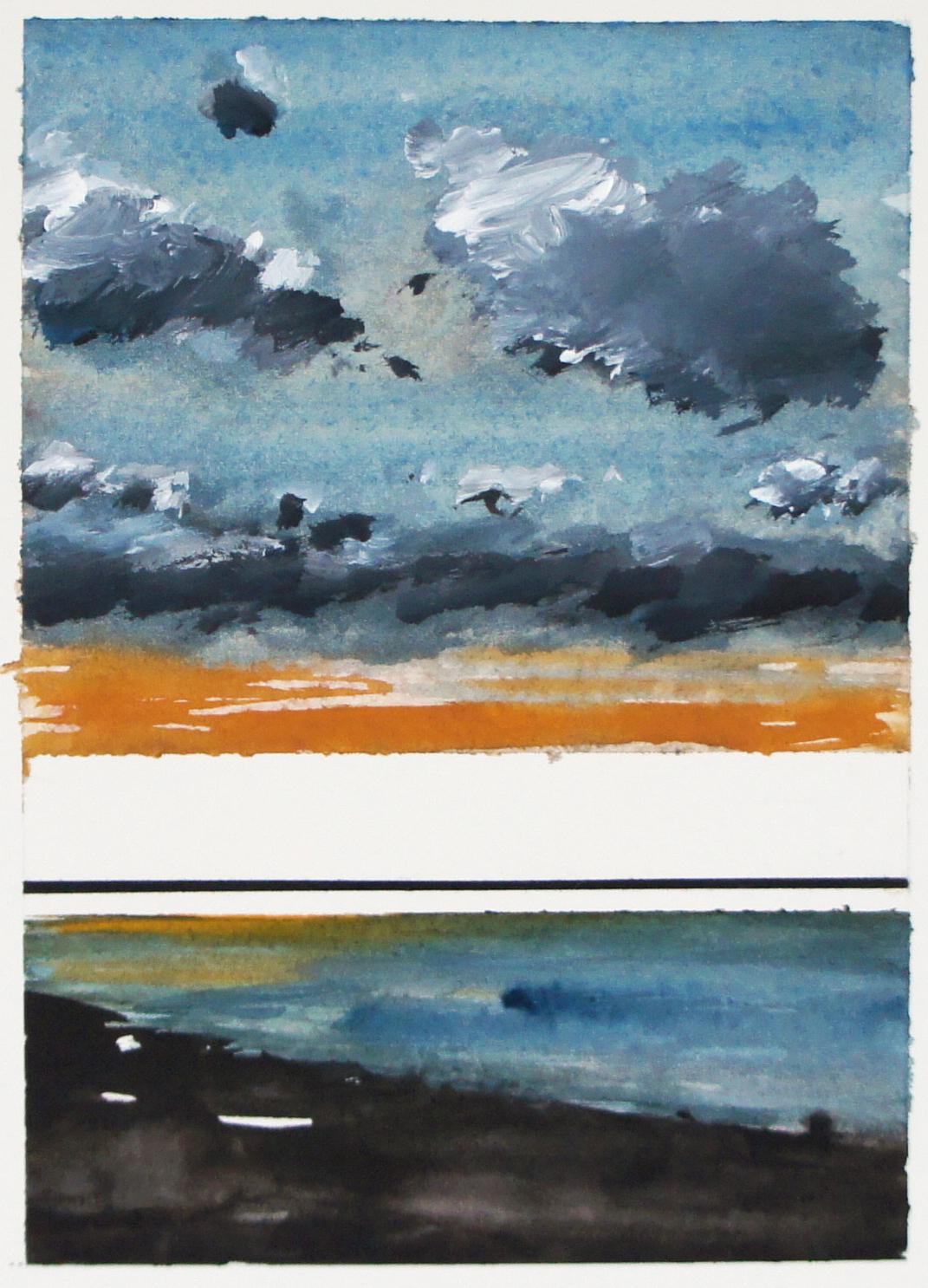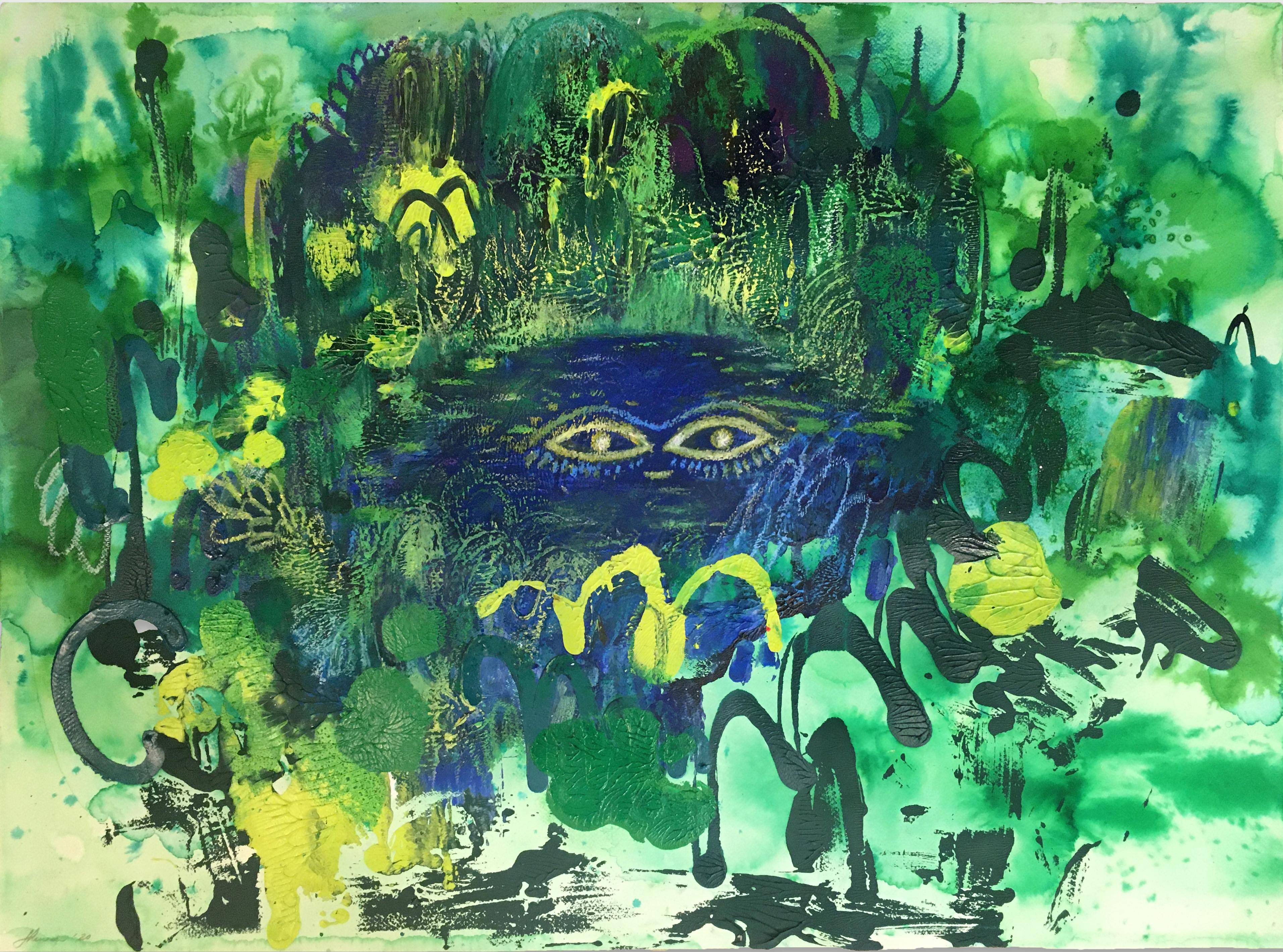Items Similar to "Irvine Harbour" James MacMaster, Scottish Seascape, Marine Ship Painting
Want more images or videos?
Request additional images or videos from the seller
1 of 10
James MacMaster"Irvine Harbour" James MacMaster, Scottish Seascape, Marine Ship Painting
About the Item
James MacMaster
Irvine Harbour
Signed lower right
Watercolor on paper
10 1/4 x 14 inches
Provenance:
Private Collection, New Jersey
- Creator:James MacMaster (1856 - 1913, Scottish)
- Dimensions:Height: 16 in (40.64 cm)Width: 19.75 in (50.17 cm)
- Medium:
- Period:
- Condition:
- Gallery Location:New York, NY
- Reference Number:1stDibs: LU1841212158032
About the Seller
5.0
Platinum Seller
These expertly vetted sellers are 1stDibs' most experienced sellers and are rated highest by our customers.
Established in 2021
1stDibs seller since 2022
59 sales on 1stDibs
Typical response time: 1 hour
- ShippingRetrieving quote...Ships From: New York, NY
- Return PolicyA return for this item may be initiated within 3 days of delivery.
More From This SellerView All
- "Afternoon Sun, " Ann Wyeth McCoy, Interior and LandscapeLocated in New York, NYAnn Wyeth McCoy (1915 - 2005) Afternoon Sun Watercolor on paper Sheet 24 x 18 inches Signed lower left Provenance: Somerville Manning Gallery Private ...Category
20th Century American Realist Landscape Drawings and Watercolors
MaterialsPaper, Watercolor
- "Gloucester Harbor at Sunset, " John Hare, Cape Ann, New England Watercolor ViewLocated in New York, NYJohn Hare Gloucester Harbor at Sunset, Massachusetts Signed lower right Watercolor on paper 16 x 12 inches John Cuthbert Hare, 1908-1978, was a watercolorist who painted boats, seascapes and harbor scenes. He was primarily associated New England, especially Cape Cod, Massachusetts where he spent his summers from 1938 to 1965. However, he was in Florida where he was a member of the St. Augustine Art Association, and other locations on the East Coast. It is likely Hare was born in New York City. He first studied commercial art in Brooklyn at the Pratt Institute and also studied at the Art Students League in Manhattan. He worked for Hearst newspapers corporation, and in 1933 married. In the next few years, he and his wife traveled extensively, camping and painting and exhibiting his work in galleries. In 1935, they visited St. Augustine and an exhibition of his watercolors was held there in the old bank...Category
Mid-20th Century Impressionist Landscape Drawings and Watercolors
MaterialsPaper, Watercolor
- "New York City Skyline View from the East River, " Lionel Reiss, Jewish ArtistBy Lionel ReissLocated in New York, NYLionel S. Reiss (1894 - 1988) New York City Skyline View from the East River Watercolor on paper 13 x 19 inches Signed lower left In describing his own style, Lionel Reiss wrote, “By nature, inclination, and training, I have long since recognized the fact that...I belong to the category of those who can only gladly affirm the reality of the world I live in.” Reiss’s subject matter was wide-ranging, including gritty New York scenes, landscapes of bucolic Bucks County, Pennsylvania, and seascapes around Gloucester, Massachusetts. However, it was as a painter of Jewish life—both in Israel and in Europe before World War II—that Reiss excelled. I.B. Singer, the Nobel Prize winner for Literature, noted that Reiss was “essentially an artist of the nineteenth century, and because of this he had the power and the courage to tell visually the story of a people.” Although Reiss was born in Jaroslaw, Poland, his family immigrated to the United States in 1898 when he was four years old. Reiss's family settled on New York City’s Lower East Side and he lived in the city for most of his life. Reiss attended the Art Students League and then worked as a commercial artist for newspapers and publishers. As art director for Metro-Goldwyn-Mayer, he supposedly created the studio’s famous lion logo. After World War I, Reiss became fascinated with Jewish life in the ‘Old World.’ In 1921 he left his advertising work and spent the next ten years traveling in Europe, the Middle East, and North Africa. Like noted Jewish photographers Alter Kacyzne and Roman Vishniac, Reiss depicted Jewish life in Poland prior to World War II. He later wrote, “My trip encompassed three main objectives: to make ethnic studies of Jewish types wherever I traveled; to paint and draw Jewish life, as I saw it and felt it, in all aspects; and to round out my work in Israel.” In Europe, Reiss recorded quotidian scenes in a variety of media and different settings such as Paris, Amsterdam, the Venice ghetto, the Jewish cemetery in Prague, and an array of shops, synagogues, streets, and marketplaces in the Jewish quarters of Warsaw, Lodz, Krakow, Lublin, Vilna, Ternopil, and Kovno. He paid great attention to details of dress, hair, and facial features, and his work became noted for its descriptive quality. A selection of Reiss’s portraits appeared in 1938 in his book My Models Were Jews. In this book, published on the eve of the Holocaust, Reiss argued that there was “no such thing as a ‘Jewish race’.” Instead, he claimed that the Jewish people were a cultural group with a great deal of diversity within and between Jewish communities around the world. Franz Boas...Category
1940s American Modern Landscape Drawings and Watercolors
MaterialsPaper, Watercolor
- "Gray Morning" James MacMaster, Scottish Seascape, Marine Ship LandscapeBy James MacMasterLocated in New York, NYJames MacMaster Gray Morning Signed and titled lower left Watercolor on paper 10 1/4 x 14 inches Provenance: Private Collection, New JerseyCategory
Late 19th Century Landscape Paintings
MaterialsPaper, Watercolor
- "Train Station, " Max Kuehne, Industrial City Scene, American ImpressionismBy Max KuehneLocated in New York, NYMax Kuehne (1880 - 1968) Train Station, circa 1910 Watercolor on paper 8 1/4 x 10 1/4 inches Signed lower right Provenance: Private Collection, Illinois Max Kuehne was born in Halle, Germany on November 7, 1880. During his adolescence the family immigrated to America and settled in Flushing, New York. As a young man, Max was active in rowing events, bicycle racing, swimming and sailing. After experimenting with various occupations, Kuehne decided to study art, which led him to William Merritt Chase's famous school in New York; he was trained by Chase himself, then by Kenneth Hayes Miller. Chase was at the peak of his career, and his portraits were especially in demand. Kuehne would have profited from Chase's invaluable lessons in technique, as well as his inspirational personality. Miller, only four years older than Kuehne, was another of the many artists to benefit from Chase's teachings. Even though Miller still would have been under the spell of Chase upon Kuehne's arrival, he was already experimenting with an aestheticism that went beyond Chase's realism and virtuosity of the brush. Later Miller developed a style dependent upon volumetric figures that recall Italian Renaissance prototypes. Kuehne moved from Miller to Robert Henri in 1909. Rockwell Kent, who also studied under Chase, Miller, and Henri, expressed what he felt were their respective contributions: "As Chase had taught us to use our eyes, and Henri to enlist our hearts, Miller called on us to use our heads." (Rockwell Kent, It's Me O Lord: The Autobiography of Rockwell Kent. New York: Dodd, Mead and Co., 1955, p. 83). Henri prompted Kuehne to search out the unvarnished realities of urban living; a notable portion of Henri's stylistic formula was incorporated into his work. Having received such a thorough foundation in art, Kuehne spent a year in Europe's major art museums to study techniques of the old masters. His son Richard named Ernest Lawson as one of Max Kuehne's European traveling companions. In 1911 Kuehne moved to New York where he maintained a studio and painted everyday scenes around him, using the rather Manet-like, dark palette of Henri. A trip to Gloucester during the following summer engendered a brighter palette. In the words of Gallatin (1924, p. 60), during that summer Kuehne "executed some of his most successful pictures, paintings full of sunlight . . . revealing the fact that he was becoming a colorist of considerable distinction." Kuehne was away in England the year of the Armory Show (1913), where he worked on powerful, painterly seascapes on the rocky shores of Cornwall. Possibly inspired by Henri - who had discovered Madrid in 1900 then took classes there in 1906, 1908 and 1912 - Kuehne visited Spain in 1914; in all, he would spend three years there, maintaining a studio in Granada. He developed his own impressionism and a greater simplicity while in Spain, under the influence of the brilliant Mediterranean light. George Bellows convinced Kuehne to spend the summer of 1919 in Rockport, Maine (near Camden). The influence of Bellows was more than casual; he would have intensified Kuehne's commitment to paint life "in the raw" around him. After another brief trip to Spain in 1920, Kuehne went to the other Rockport (Cape Ann, Massachusetts) where he was accepted as a member of the vigorous art colony, spearheaded by Aldro T. Hibbard. Rockport's picturesque ambiance fulfilled the needs of an artist-sailor: as a writer in the Gloucester Daily Times explained, "Max Kuehne came to Rockport to paint, but he stayed to sail." The 1920s was a boom decade for Cape Ann, as it was for the rest of the nation. Kuehne's studio in Rockport was formerly occupied by Jonas Lie. Kuehne spent the summer of 1923 in Paris, where in July, André Breton started a brawl as the curtain went up on a play by his rival Tristan Tzara; the event signified the demise of the Dada movement. Kuehne could not relate to this avant-garde art but was apparently influenced by more traditional painters — the Fauves, Nabis, and painters such as Bonnard. Gallatin perceived a looser handling and more brilliant color in the pictures Kuehne brought back to the States in the fall. In 1926, Kuehne won the First Honorable Mention at the Carnegie Institute, and he re-exhibited there, for example, in 1937 (Before the Wind). Besides painting, Kuehne did sculpture, decorative screens, and furniture work with carved and gilded molding. In addition, he designed and carved his own frames, and John Taylor Adams encouraged Kuehne to execute etchings. Through his talents in all these media he was able to survive the Depression, and during the 1940s and 1950s these activities almost eclipsed his easel painting. In later years, Kuehne's landscapes and still-lifes show the influence of Cézanne and Bonnard, and his style changed radically. Max Kuehne died in 1968. He exhibited his work at the National Academy of Design, the Art Institute of Chicago, the Carnegie Institute in Pittsburgh, the Memorial Art Gallery of the University of Rochester, and in various New York City galleries. Kuehne's works are in the following public collections: the Detroit Institute of Arts (Marine Headland), the Whitney Museum (Diamond Hill...Category
1910s American Impressionist Landscape Drawings and Watercolors
MaterialsPaper, Watercolor
- "Old Adobe Village, New Mexico" Alice Schille, Taos Pueblo, Female ImpressionistBy Alice SchilleLocated in New York, NYAlice Schille Old Adobe Village, New Mexico Signed lower right Watercolor on paper 5 x 6 inches Provenance: Estate of the artist Keny and Johnson Gallery, Columbus, Ohio Santa Fe East Galleries, Santa Fe, New Mexico Private Collection, California A painter in watercolor and oil, Alice Schille was a prolific artist using modernist styles of Post-Impressionism, Pointillism and Fauvism. Her subjects included portraits of women and children, landscapes with and without figures, a series of scenes of New York City. New Mexico, and Gloucester, Massachusetts. Her paintings also reflected her widespread international travels in Europe, North Africa, Russia, the Middle East, Mexico, and Guatemala. Although personally very shy, Schille possessed unusual courage and strength of will, which was reflected in both her independent lifestyle and in her work, as she continually worked to master new modes of painting throughout her career. A German critic once referred to Schille as "this daredevil disciple of art who is interested in anything and afraid of nothing." Alice Schille was born in Columbus, Ohio to a family supported by her father's success in manufacturing. She was raised in Columbus, and by the time she was age six, she determined to be an artist. She graduated at the top of her class from Central High School in 1887, studied from 1891 to 1893 at the Columbus Art School, and returned there as a teacher from 1902 to 1948. Going to New York City as a young woman, she enrolled in the Art Students League from 1897 to 1899 and then the New York School of Art with William Merritt Chase and Kenyon Cox. (Some years later, she attended Chase's Shinnecock Summer School on Long Island). From 1903 to 1904, Alice Schille was in Paris at the Academie Colarosi, and also studied privately with Raphael Collin, Rene Prinet, Gustave Courtois and Chase, who was then in Europe. In 1904, five of her paintings were accepted for exhibition at Societe Nationale des Beaux Arts, and from that time on her work was included regularly in important American annual exhibitions including the Pennsylvania Academy, the Corcoran Gallery, American Watercolor Society, Boston Art Club, and the 1987 inaugural exhibition of the National Museum of Women in the Arts in Washington DC. Between 1905 and 1914, Alice Schille painted in Europe, and during the summers of 1916 to 1918, worked in New York and Gloucester. In 1919, she was in New Mexico. On this trip, her first to the Southwest, she spent a summer in Taos and Santa Fe and painted scenes including the Taos Pueblo, Canyon Road and local Hispanic and Indian figures. Reportedly the Ranchos de Taos Church was one of her favorite subjects. Many of these New Mexico paintings were hung at annual exhibitions of the Philadelphia Water Color Club. Between 1920 and 1940, she traveled frequently in the summers, returning to New Mexico and going to Central America and Africa. In 1922, she began her first series of North-African watercolors...Category
1920s American Impressionist Landscape Drawings and Watercolors
MaterialsPaper, Watercolor
You May Also Like
- Larch Season, Lake LouiseBy Rebecca LivermoreLocated in Salt Lake City, UTLarch Season, Lake Louise 10 x 15 inches (Framed size: 21.75 x 17.25 inches) watercolor on paper (painted using lightfast pigments, acid-free paper and archival framing materials) $2,450 Landscape: Banff National Park, Canada. Snowy peaks above Lake Louise. - Rebecca Livermore...Category
2010s Other Art Style Landscape Drawings and Watercolors
MaterialsWatercolor, Archival Paper
- Cedar Breaks SaturationBy Rebecca LivermoreLocated in Salt Lake City, UTCedar Breaks Saturation 11 x 11 inches (Framed size: 18 x 17.75 inches) watercolor on paper (painted using lightfast pigments, acid-free paper and archival framing materials) $1,850 Landscape: Cedar Breaks National Monument, Utah. Colorful eroded sandstone cliffs. - Rebecca Livermore...Category
2010s Other Art Style Landscape Drawings and Watercolors
MaterialsWatercolor, Archival Paper
- Utah LayersBy Rebecca LivermoreLocated in Salt Lake City, UT"Utah Layers" by Rebecca Livermore, watercolor, 10 X 15 inches (Frame size: 17 1/4 X 21 3/4 in.), $2150. "Quiet places are my usual subjects. We liv...Category
2010s Other Art Style Landscape Drawings and Watercolors
MaterialsWatercolor, Archival Paper
- Motif(s) - Watercolour, Contemporary Landscape Painting, SeasideLocated in AIX-EN-PROVENCE, FRWatercolour, Acrylic Painting and Charcoal on paper. Work Title : "Motif(s)" (series) Artist : Fabien Granet (FR) The work is signed and dated on the back of the work. Unique work. Size : H26xW21cm. With archival Mat, framed in a 30x24 cm frame. Born in 1970 the artist lives and works in France. The majority of his drawings and paintings are inspired by the wild landscapes of Brittany in France. " The drawing as a gesture allows me to exploit a (re)mise-en-scene as so many possibilities in the making. Through the quality of drawing as a marker of thought, it is not a question of constructing "dream worlds" but rather of setting up a device that would allow for a conscious dialogue of a certain perception of the real." Fabien Granet is pursuing a research on the perception of the landscape, on our ways of trying to represent it, to understand it, to understand its structures. The drawn "landscapes" are thus as many projections of the artist, which convene and reveal his artistic path, the influences of his culture, his utopias, his dystopian fantasies. Another shift where the quasi scientific concern of objective rigor and the mental construction of an construction of an individual course. The drawing appears in this sense as an act as much as a work which The drawing appears in this sense as an act as much as a work which is registered in a research and a quest to pierce the enigma of the real. In his landscapes, Fabien Granet evokes a process of the mind, where shreds and fragments become entangled in a re-arrangement of of reality. Snippets of architecture and geometrical figures draw human and his gaze into it. The landscape is a human creation, but how does human try to perceive it, how does he understand its constructions? what is his mental image of it? Chaos and structure intersect in a paradox of our vision of the world: the artist picks out the sensitive elements in a reflection on the possibilities in the making. Solo exhibitions : 2021 "Les Indestinés" (Drawing Now Art Fair) Galerie Jean-Louis Ramand - Paris / 2017 "mise-en-paysage" galerie Tokonoma - Paris / 2015 "Shiftings" galerie White Project - Paris / 2012 "Risée" galerie G&G - Paris / 2011 "Transistoires" galerie P&Z - Angoulême / 2010 "Tandis que? Group exhibitions (selection) : 2021 " SUMMER TALENTS " - Galerie Jean-Louis Ramand / 2019 " FEEL GOOD " Galerie Jean-Louis Ramand - Paris / 2019 " Naturalia " Mexico / 2019 " (re) mise-en-scène " Galerie Jean-Louis Ramand - Aix-en-Provence / 2019 " ScapeLand " Galerie Jean-Louis Ramand - Paris / 2019 " Blanc Ciel " espace d'art associatif La Perception - Creuse/ 2018 " Angle Mort " Ici. Gallery - Paris/ 2018 " Drawing in Gallery " Galerie ALB - Paris/ 2017 " Where form meets Art " Antwerp Art...Category
21st Century and Contemporary Contemporary Landscape Paintings
MaterialsAcrylic, Charcoal, Watercolor, Archival Paper
- Ecueils - Watercolor, Contemporary Painting, SeasideLocated in AIX-EN-PROVENCE, FRWatercolor, Acrylic Painting and Charcoal on paper. Contemporary Painting, Seaside Work Title : Ecueils Artist : Fabien Granet (FR) The work is signed, titled and dated verso. Unique work. Size : H26xW21cm. Museum matting & backing included, framed in a 30x24 cm standard aluminium frame. Born in 1970 the artist lives and works in France. The majority of his drawings and paintings are inspired by the wild landscapes of Brittany in France. " The drawing as a gesture allows me to exploit a (re)mise-en-scene as so many possibilities in the making. Through the quality of drawing as a marker of thought, it is not a question of constructing "dream worlds" but rather of setting up a device that would allow for a conscious dialogue of a certain perception of the real." Fabien Granet is pursuing a research on the perception of the landscape, on our ways of trying to represent it, to understand it, to understand its structures. The drawn "landscapes" are thus as many projections of the artist, which convene and reveal his artistic path, the influences of his culture, his utopias, his dystopian fantasies. Another shift where the quasi scientific concern of objective rigor and the mental construction of an construction of an individual course. The drawing appears in this sense as an act as much as a work which The drawing appears in this sense as an act as much as a work which is registered in a research and a quest to pierce the enigma of the real. In his landscapes, Fabien Granet evokes a process of the mind, where shreds and fragments become entangled in a re-arrangement of of reality. Snippets of architecture and geometrical figures draw human and his gaze into it. The landscape is a human creation, but how does human try to perceive it, how does he understand its constructions? what is his mental image of it? Chaos and structure intersect in a paradox of our vision of the world: the artist picks out the sensitive elements in a reflection on the possibilities in the making. Solo exhibitions : 2023 "GRAND ERRE" with Galerie Jean-Louis Ramand, Aix en provence / 2021 "Les Indestinés" (Drawing Now Art Fair) Galerie Jean-Louis Ramand - Paris / 2017 "mise-en-paysage" galerie Tokonoma - Paris / 2015 "Shiftings" galerie White Project - Paris / 2012 "Risée" galerie G&G - Paris / 2011 "Transistoires" galerie P&Z - Angoulême / 2010 "Tandis que? Group exhibitions (selection) : 2021 " SUMMER TALENTS " - Galerie Jean-Louis Ramand / 2019 " FEEL GOOD " Galerie Jean-Louis Ramand - Paris / 2019 " Naturalia " Mexico / 2019 " (re) mise-en-scène " Galerie Jean-Louis Ramand - Aix-en-Provence / 2019 " ScapeLand " Galerie Jean-Louis Ramand - Paris / 2019 " Blanc Ciel " espace d'art associatif La Perception - Creuse/ 2018 " Angle Mort " Ici. Gallery - Paris/ 2018 " Drawing in Gallery " Galerie ALB - Paris/ 2017 " Where form meets Art " Antwerp Art...Category
21st Century and Contemporary Contemporary Landscape Paintings
MaterialsAcrylic, Archival Paper, Watercolor, Charcoal
- Gift, 2020, watercolor, oil pastel, pink, orange, rabbit, ink, fantasyBy Shamona StokesLocated in Jersey City, NJGift, 2020, watercolor, oil pastel, pink, orange, ink, fantasy, rabbit.Category
2010s Contemporary Landscape Paintings
MaterialsPaper, Oil Pastel, Ink, Watercolor, Graphite
Recently Viewed
View AllMore Ways To Browse
James 1
Framed Jersey
Marine Collection
Marine Antique
Antique Ship Painting Paintings
Antique Ship Painting
Antique Ship Paintings
Antique Scottish Paintings
Antique Scottish Painting
Antique Marine Art
Ship Painting 19th
Antique Marine Painting
Antique Marine Paintings Paintings
Antique Marine Paintings
19th Century Ship Paintings
19th Century Marine
Antique Seascapes
Antique Seascape




